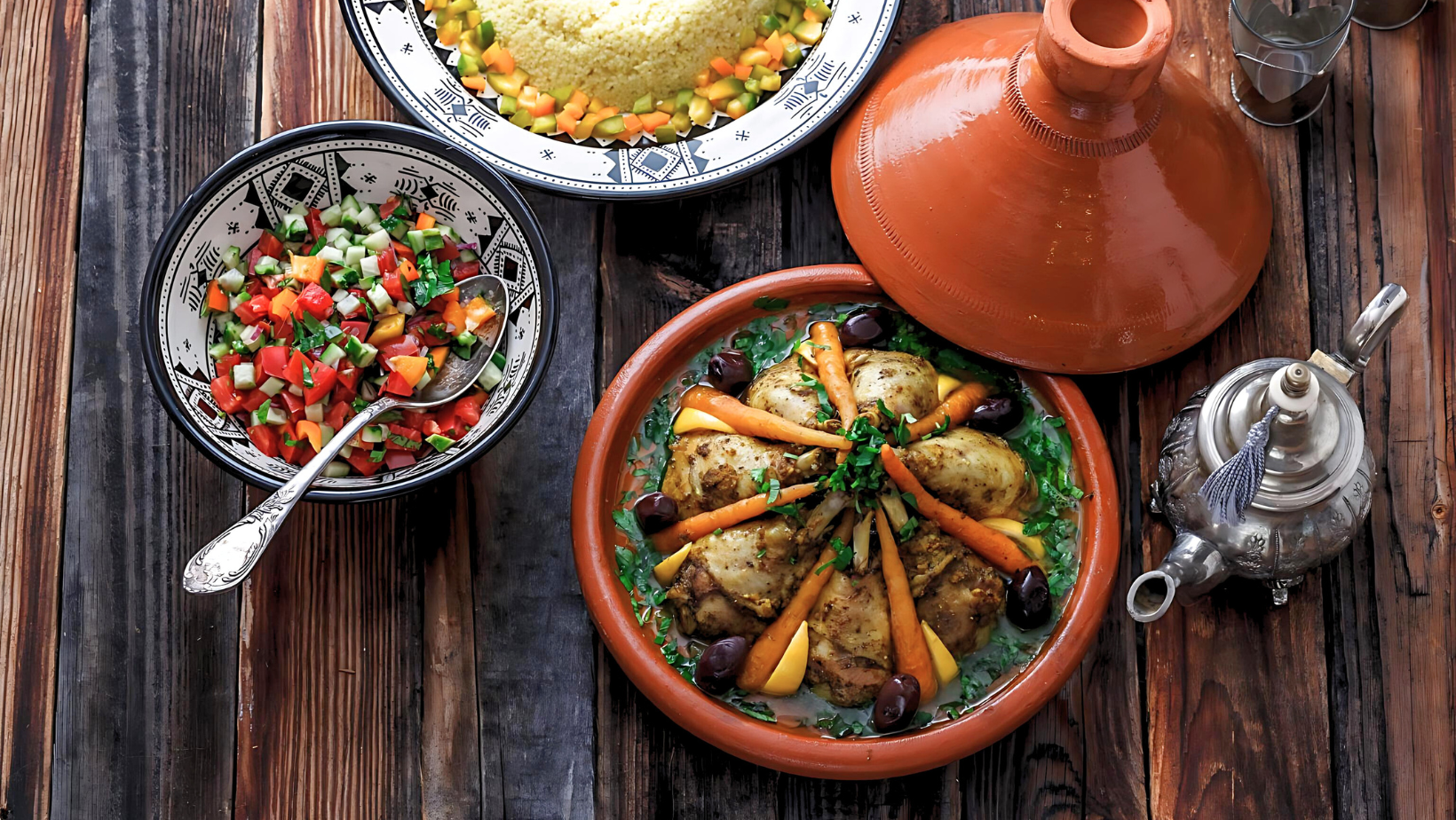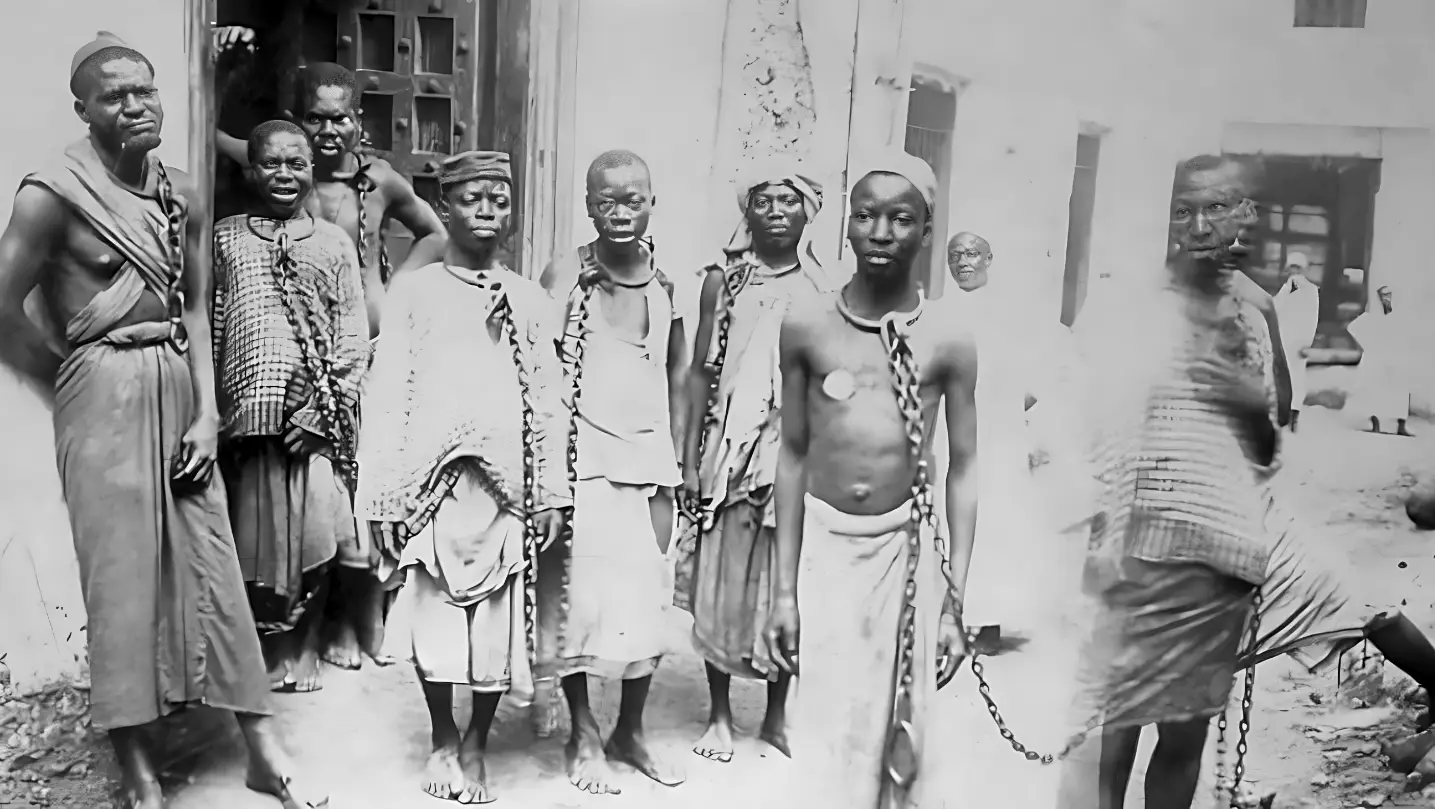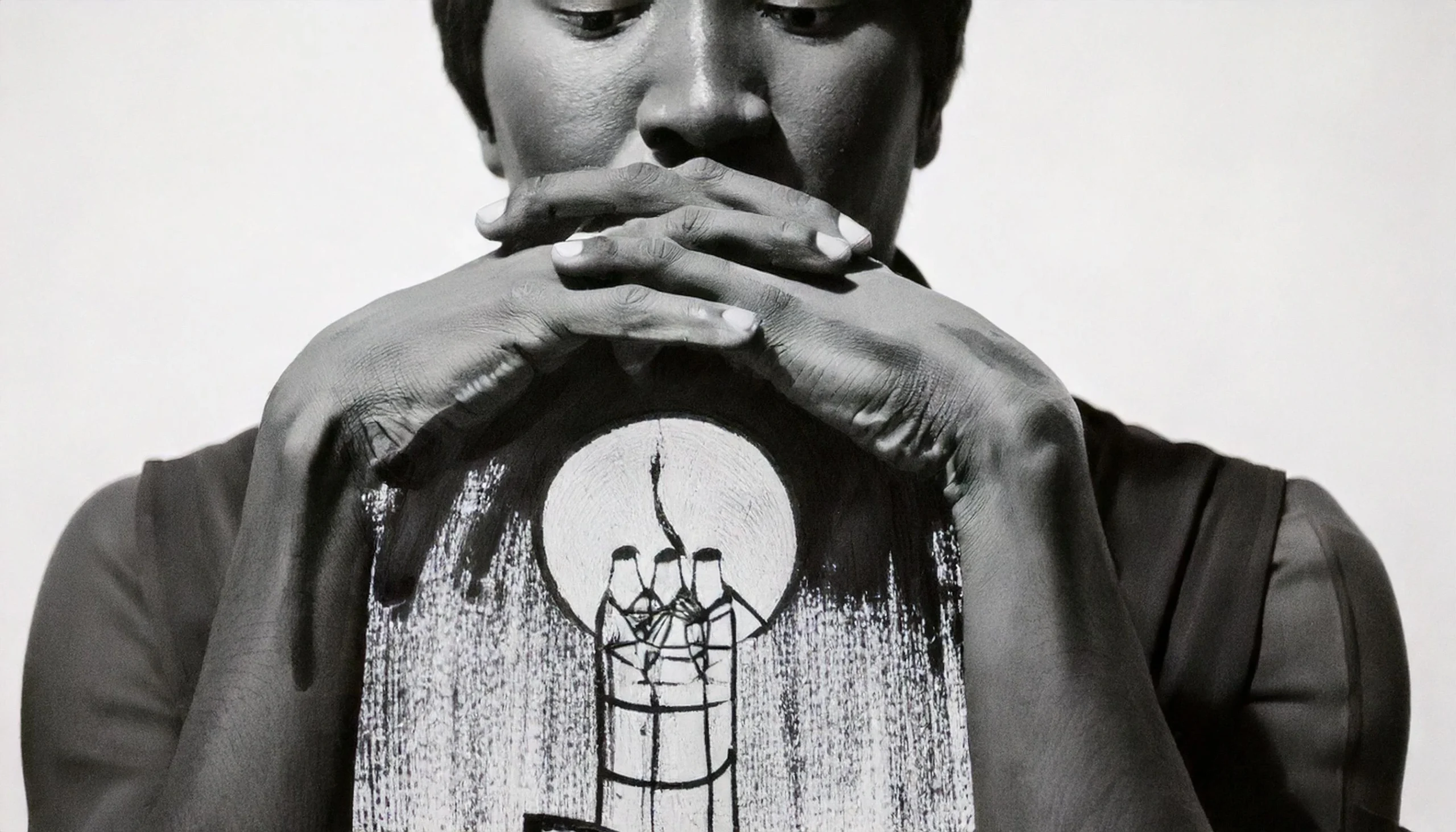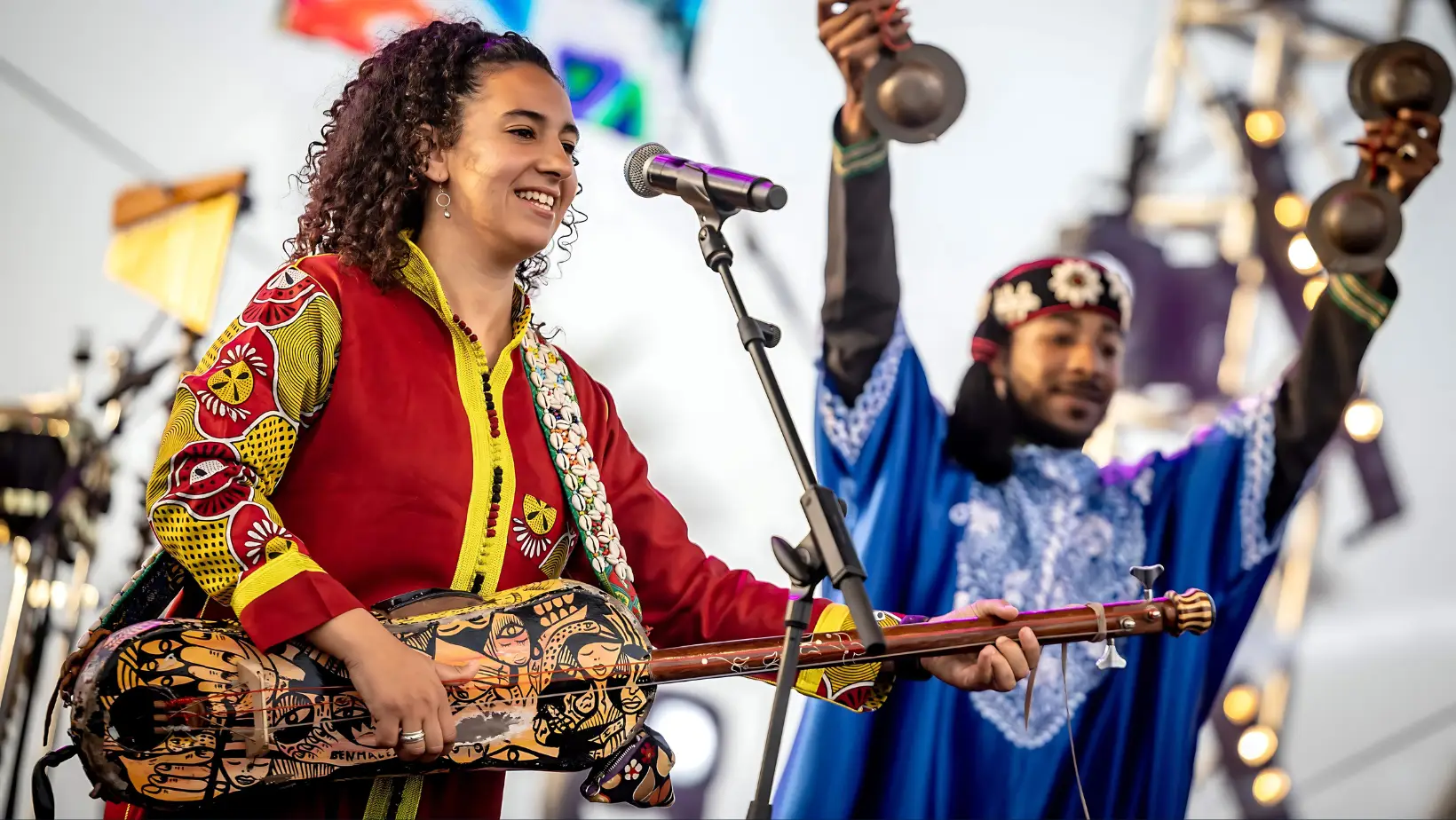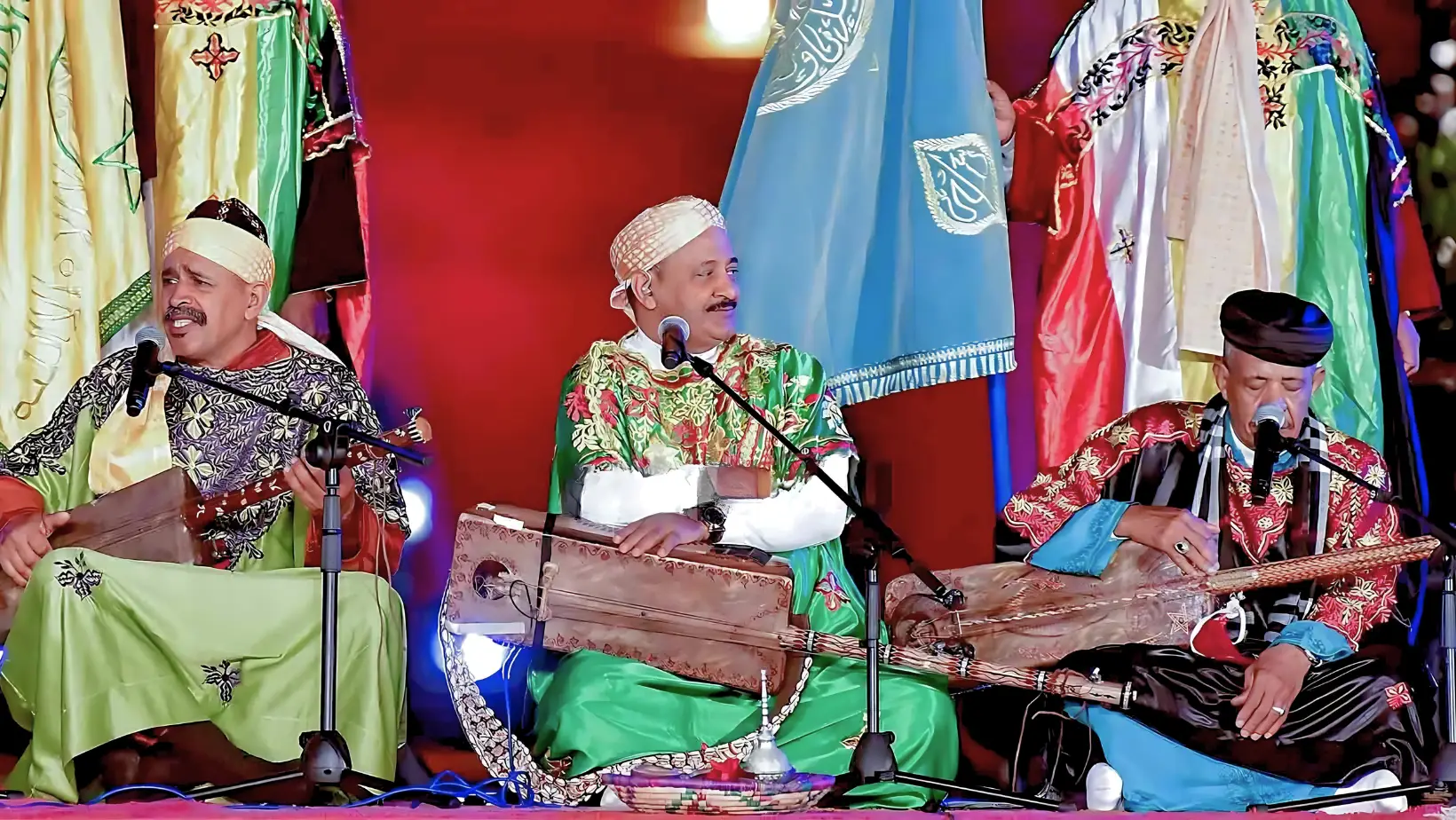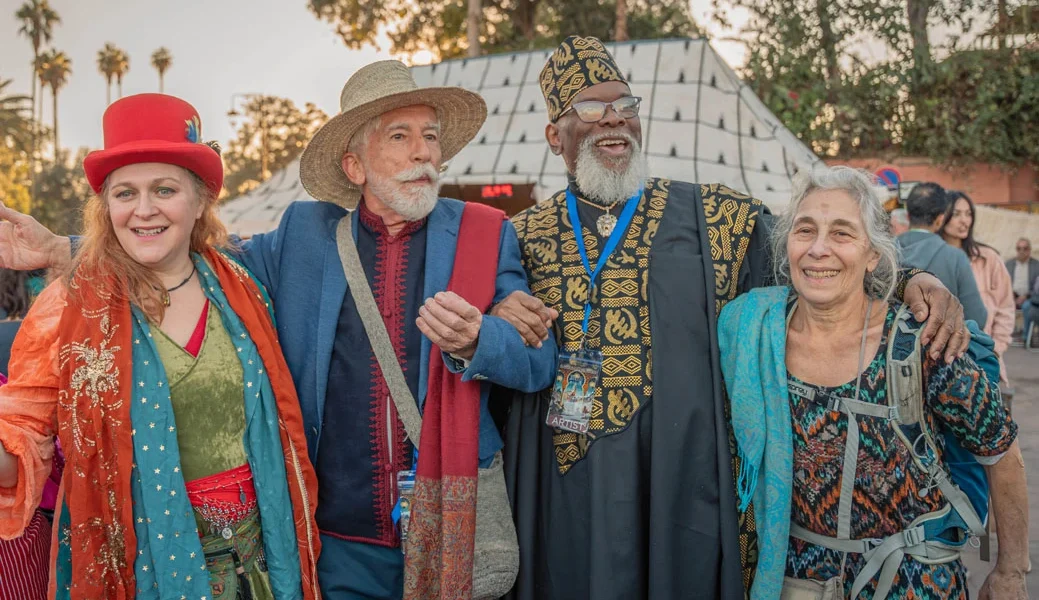Gnawa culture, renowned for its profound spiritual music and vibrant ceremonies, also offers a unique culinary heritage that tantalizes the taste buds with a blend of African roots and Moroccan flavors. This blog post delves into the traditional dishes and culinary practices associated with Gnawa culture, exploring how these foods not only nourish the body but also carry deep cultural and spiritual significance.
Introduction to Gnawa Culinary Traditions
Gnawa cuisine is a reflection of the rich cultural synthesis characteristic of the Gnawa people, whose ancestors came from West Africa to Morocco. This cuisine blends the robust, earthy flavors of Sub-Saharan Africa with the spicy aromas of Moroccan cooking, creating dishes that are both unique and tantalizing. Food in Gnawa culture is not just sustenance; it is an integral part of spiritual ceremonies and communal gatherings, designed to foster a sense of unity and spiritual wellbeing.
Key Ingredients and Flavors
The staple ingredients in Gnawa cuisine include cereals, legumes, meat (particularly goat and lamb), and an abundance of spices, which are reminiscent of both African and Moroccan pantries. Spices such as cumin, saffron, and paprika are often used to enhance the flavors, along with herbs like mint and parsley. Dates, almonds, and honey are also important, not only for their flavors but for their symbolic meanings in Gnawa rituals.
Traditional Dishes of Gnawa Cuisine
1. L’hamd Mrakad (Preserved Lemon Chicken)
This dish beautifully showcases the Moroccan influence on Gnawa cuisine. Chicken is slow-cooked with preserved lemons, olives, and a blend of spices including ginger and turmeric. The preserved lemons are key, imparting a unique citrusy flavor that is quintessentially Moroccan but embraced fully within Gnawa cooking.
2. Couscous Tfaya
Couscous is a staple not just in Moroccan households but also in Gnawa families. Tfaya refers to the sweet and spicy caramelized onions and raisins that are served with the couscous, often accompanied by a rich, spiced broth and chunks of tender meat. This dish is frequently prepared for celebrations and large gatherings, symbolizing abundance and community.
3. Harira
This hearty soup is made from tomatoes, lentils, chickpeas, and a rich blend of herbs and spices. It is often served during Ramadan to break the fast, but in Gnawa culture, it also features in the spiritual Lila ceremonies, providing nourishment during the all-night events.
4. Bissara
This humble soup made from dried broad beans is a common breakfast in winter. Rich in garlic and olive oil, and often served with a sprinkle of cumin and a squeeze of lemon juice, b’ssara is appreciated for its simplicity and nutritional value.
Culinary Practices in Spiritual Ceremonies
Food plays a critical role in Gnawa spiritual ceremonies, particularly the Lila, where the community gathers to partake in music, dance, and feasting, which are believed to facilitate healing and spiritual communication. Dishes served during these events are often rich and hearty, intended to sustain participants through the night. Offerings of food are also made to the spirits, a practice that underscores the deep intertwining of sustenance with spirituality in Gnawa culture.
Conclusion
Gnawa cuisine is a vibrant testament to the culture’s rich heritage, marked by a fusion of African and Moroccan culinary traditions. The food is steeped in symbolism and is an essential component of the spiritual and communal life of the Gnawa people. Exploring Gnawa cuisine offers a delicious entry point into understanding the broader cultural and spiritual practices of this fascinating community, highlighting how food can be both a source of comfort and a tool for cultural expression.
